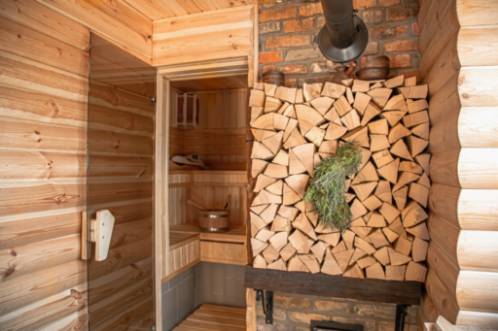Safety Measures and Clearances
22 November 2025 by Kyle A.Saunas are a popular way to relax and unwind, providing numerous health benefits for both the mind and body. However, it is important to ensure that safety measures and clearances are properly understood and followed when using a sauna stove, especially in wood-burning saunas. By taking the necessary precautions and practicing fire prevention measures, you can enjoy a soothing sauna experience while ensuring the safety of yourself and others.

Understanding Minimum Clearances for Sauna Stoves
Sauna stoves are a popular choice for heating up saunas, providing a traditional and authentic sauna experience. However, it is important to understand the minimum clearances required for sauna stoves to ensure safety and prevent any potential hazards. The minimum clearance distance refers to the space required between the sauna stove and any combustible materials such as wood, walls, or other flammable surfaces. These clearances are essential to prevent the risk of fire and ensure that the sauna stove operates safely. The specific minimum clearance distances may vary depending on the type of sauna stove and its size, as well as the manufacturer's recommendations. However, in general, a common guideline is to maintain a clearance of at least 18 inches (45 cm) around the sauna stove. It is important to take these clearance requirements seriously and not to underestimate the potential risks of not following them. Failure to maintain proper clearances can lead to overheating of surrounding materials, increased risk of fire, and ultimately pose a danger to your safety and the safety of others using the sauna. Before installing a sauna stove, always refer to the manufacturer's guidelines and ensure that you have the appropriate clearances in place. Regularly inspect and monitor the area around the sauna stove to make sure that the clearances are maintained and that there are no obstructions that could pose a fire hazard. By understanding and adhering to the minimum clearances for sauna stoves, you can enjoy a safe and relaxing sauna experience without compromising on safety.Safety Tips for Using Wood-Burning Saunas
Here are some key safety tips for using wood-burning saunas:Always use dry, seasoned wood for your sauna stove. Wet or green wood can create excessive smoke and creosote buildup, increasing the risk of a chimney fire.
Keep a close eye on the fire and stove temperature while using the sauna. Make sure the stove is properly ventilated and never leave the sauna unattended while the fire is burning.
Install a heat shield or protective barrier around the stove to prevent accidental burns. It is also recommended to have a fire extinguisher nearby in case of emergencies.
Be mindful of your clothing and towel placement inside the sauna. Avoid placing anything too close to the stove that could catch fire.
Take precautions to prevent carbon monoxide buildup in the sauna. Ensure proper ventilation and never use any chemicals or accelerants in the stove that could release harmful fumes. By following these safety tips, you can enjoy the benefits of a wood-burning sauna while minimizing the risk of accidents or fires. Remember, safety should always be a top priority when using any type of sauna.
Fire Prevention Measures for Wood-Burning Saunas
Here are some important fire prevention measures to keep in mind:Regularly inspect and clean the stove: It is important to inspect the sauna stove regularly for any signs of wear and tear. Make sure to clean out any ash buildup and remove any debris from the stove to prevent a potential fire hazard.
Use proper ventilation: Proper ventilation is essential to prevent the buildup of carbon monoxide and other harmful gases. Make sure your sauna is properly ventilated to allow for the safe release of smoke and gases generated by the wood-burning stove.
Keep flammable materials away: Keep all flammable materials, such as towels, oils, and cleaning supplies, away from the sauna stove. These materials can easily ignite and cause a fire if they come into contact with the hot stove.
Have a fire extinguisher nearby: It is important to have a fire extinguisher readily available in case of a fire emergency. Make sure you know how to properly use the fire extinguisher and keep it in an easily accessible location near the sauna.
Never leave the sauna unattended: It is important to never leave the sauna unattended when the stove is lit. Make sure someone is always present to monitor the stove and respond to any potential fire hazards immediately. By following these fire prevention measures, you can ensure the safe operation of your wood-burning sauna and enjoy a relaxing sauna experience without having to worry about potential fire hazards.